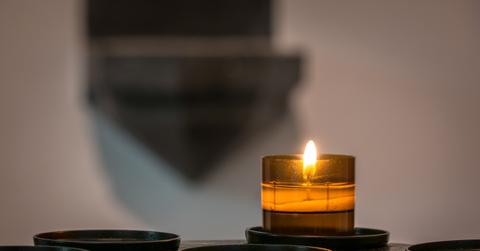Everything You Need To Know When Shopping For Sustainable Candles
With hundreds of different candles on the market, it can be tricky choosing ones that are sustainable. The good news is that choosing environmentally safe candles is easy once you know what to look for.
Updated May 22 2019, 5:14 p.m. ET
Despite the introduction of kerosene and electricity, candles have remained in widespread use throughout the last 5,000 years. Their success and popularity is undoubtedly attributed to their versatility. Candles offer beautiful decor, fresh scents, and emergency light, in case the electricity goes out. Their staying power may also be due to their intrinsic link to celebrations and holidays. Can you imagine birthday cakes without candles to blow out? Hanukkah or Advent without decorative candles to mark holy days?
Apart from all its uses, there is more to candles than meets the eye. Throughout the centuries, dozens of different types of candles have been developed. Before you choose one, it's important to look closely at the ingredients such as the type of wax, wick, and scent used.
Paraffin wax is one of the most popular types of candles currently on the market. This type of wax is often used because it is one of the most economic to produce and is very easy to work with compared to other waxes. But it's important to note: Paraffin is a petroleum byproduct, so it can pollute the air in your home or office. If you have paraffin candles, consider burning them in an open area.
Soy wax is also a very popular type of wax and is considered sustainable because soy beans can be farmed and harvested. There are two things to note when choosing soy candles. First, the majority of soy wax in the United States is genetically modified, so some consumers actively choose candles that are made with GMO-free soy. Also, steer away from candles described as a “soy blend,” as those are often mixed with other waxes, such as paraffin.
Beeswax is often considered the best quality candle to choose from. These were one of the first types of candles created and have kept cathedrals lit for centuries. Not only is beeswax 100 percent natural, but some scientific studies have suggested that burning beeswax candles releases negative ions and helps improve air quality.
Palm wax is naturally derived from food grade palm oil. This wax often creates a tell tale marbled look on the candle's surface. Be sure to choose palm wax candles from a responsible source and avoid ones that may have been attributed to the destruction of forests and orangutan habitats. Coconut wax is another natural option which is gaining popularity. This wax tends to burn very clean and makes for a great vegan option.
After checking the wax, remember to also look closely at the wicks and lead. Scented candles often have phthalates, which some people choose to avoid for health reasons, so check for phthalate free candles. In general, wicks should be lead free and made of cotton.
